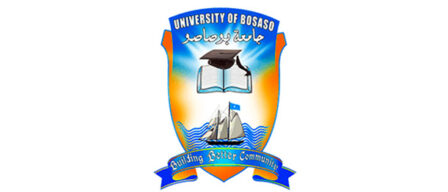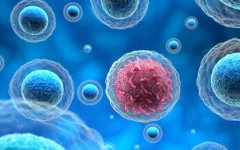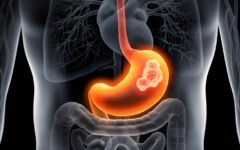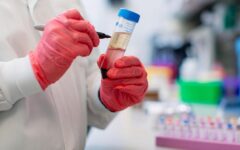E. coli Bacteria
December 8, 2023 2023-12-08 15:29E. coli Bacteria
Abstract
The bacteria Escherichia coli, shortened as E. coli, is famous for causing food poisoning and diarrhea. It is perhaps one of the most studied bacteria throughout the world. It was first discovered in 1886 by Theodor Escherich, who realized the bacteria’s mutualistic relationship with their hosts. The bacterium belongs to a group called coliforms, which majorly reside in the gastrointestinal tracts of humans and other animals. The bacterium lives in healthy human intestines and other animals. Most E. coli are harmless, but others like O157:H7 may cause acute abdominal pains, traveler’s diarrhea, and vomiting. The bacterium may be ingested through contaminated water, cooked food, raw beef, or vegetables. Healthy adults can recover from E. coli in a week or two. However, children are at risk of developing health complications, leading to kidney failure. Unlike other bacteria that affect humans when ingested in large amounts, E. coli can cause infections even when taken in small amounts. For instance, slightly cooked hamburgers or contaminated pool water are potential sources of E. coli infections.
While E. coli is associated with fatal effects in the human body, most strains do not cause diseases. Most of the E. coli bacterium strains are mutualistic and help humans digest food as humans provide an excellent environment to multiply and food for their survival. Transformed E. coli, like malleated bacteria, release chemicals essential in fighting against pathogenic microbes (Noda et al., 2017). Humans derive vitamin K from the E. coli K-12 strain, essential in the blood clotting process. This strain is also helpful in the production of phylloquinone (K1), menaquinone (K2), and menadione (K3), which are essential for growth in humans and animals (Bentley & Meganathan, 1982).
In contrast, some strains release a fatal toxin called Shiga toxin. When the poison enters the cells, it interacts with ribosomes and halts the production of proteins. When proteins are not synthesized, the cells cannot replace worn-out or spoilt cells leading to death hemorrhagic colitis of the intestinal cells (Kijewski et al., 2020). This condition leads to inflammation of the intestinal tract and diarrheal fecal matter that contains blood. In severe cases, patients can have hemolytic uremic syndrome (HUS), a condition characterized by damaging blood vessels in the kidneys when they become inflamed.
Treatment of E. coli is carried out using preventative measures since E. coli does not respond to antibiotics. They are resistant to the general use of antibiotics like cephalosporins and tetracyclines. Medicines are taken when a patient is having an E. coli infection to alleviate the levels of toxicity caused by the bacteria. Antibiotics increase toxicity levels to an E. coli patient, which risks a patient suffering from hemolytic uremic syndrome. Given the broad spectrum of the bacteria, Sirsat, Almanza, and Neal (2013) propose that people should adopt preventative culture rather than seeking treatment on infections that may have been preventable. Serious illness of hemolytic uremic syndrome (HUS) may require blood transfusion and kidney dialysis.
In order to reduce the risks associated with infections of the bacteria, preventive measures can be observed. Having known that raw foods and uncooked meat are the bacteria’s common carriers, it is essential to cook meat well. Milk should be pasteurized to kill the bacteria before it is ingested. Raw fruits and vegetables should be washed properly before eating to wash away the E. coli bacteria on the surface. Proper washing of hands after handling tools, other animals, and other materials helps squash the bacteria from hands that would have been otherwise ingested while eating. Utensils should also be washed appropriately to reduce the carriage of bacteria from host to host. Children bear higher health risks compared to adults. They should therefore be kept away from environments suspected to have the bacteria.
Similarly, people with a weakened immune system and terminal illnesses are more likely to be affected by the bacteria. Therefore, they should avoid environments with bacteria (Parker et al., 2016). Decreased stomach acid levels may become a suitable environment for E. coli to multiply. Therefore, people should avoid prolonged antiacids like esomeprazole (Nexium) and pantoprazole (Protonix).
The Center for Disease Control and Prevention (CDC) outlines basic principles that people should use to prevent infections caused by toxic E. coli. Food should be prepared through four steps to food safety: clean, separate, cook, and chill. The organization also recommends that beef steaks be boiled to an internal temperature of at least 145°F (62.6˚C). The meat should be exposed to this heat for at least three minutes to kill potential germs associated with E. coli. It is also notable that the organization records more children patients than adults suffering from E. coli infections each year. This is attributed to children’s susceptibility to E. coli because of their tender gastrointestinal tracts that cannot withstand the bacteria’s effects (CDC, 2022).
The largest outbreak of this bacterium was in 1982 when E. coli O157:H7 caused numerous cases of diarrhea throughout the world. Undercooked hamburgers became the prime suspected source of the infection. Even though it accounts for only 33% of food-borne diseases, subsequent outbreaks after the first epidemic were studied and discovered that food-related infections peak during the summer (Rangel et al., 2005). The outbreaks were frequent at community-wide levels, where a few community members like camping or picnic community would experience a sharp increase of diarrhea cases related to E. coli O157:H7.
In conclusion, E. coli bacteria is one of the most studied bacteria worldwide. It is majorly found in the gastrointestinal tract of humans and animals. Some strains are mutualistic to humans and animals since they help produce Vitamin K. However, strain O157:H7 is harmful as it produces Shiga toxin that is fatal to human health. Toxic E. coli bacteria may cause diarrhea and acute abdominal pain. The bacteria is majorly ingested through food and has no proper known antibiotics for its treatment. CDC organization advocates for preventative measures like proper cooking and washing hands properly to curb its effects.
References
Bentley, R., & Meganathan, R. (1982). Biosynthesis of vitamin K (menaquinone) in bacteria. Microbiological Reviews, 46(3), 241–280.
CDC. (2022). E. coli (Escherichia coli). Retrieved from Centers for Disease Control and Prevention: https://www.cdc.gov/ecoli/ecoli-prevention.html
Kijewski, A., Witsø, I. L., Iversen, H., Rønning, H. T., L’Abée-Lund, T., Wasteson, Y., Lindbäck, T., & Aspholm, M. (2020). Vitamin K Analogs Influence the Growth and Virulence Potential of Enterohemorrhagic Escherichia coli. Applied and environmental microbiology, 86(24), e00583-20.
Noda, S., Shirai, T., Mori, Y., Oyama, S. & Kondo, A. (2017). Engineering a synthetic pathway for maleate in Escherichia coli. Nature Communications. 8, 1153 DOI: 10.1038/s41467-017-01233-9
Parker, N., Schneegurt, M., Tu, A., Forster, B., & Lister, P. (2016). Microbiology (4th ed.). OpenStax.
Rangel, J. M., Sparling, P. H., Crowe, C., Griffin, P. M., & Swerdlow, D. L. (2005). Epidemiology of Escherichia coli O157:H7 outbreaks, United States, 1982-2002. Emerging infectious diseases, 11(4), 603–609. https://doi.org/10.3201/eid1104.040739.
Sirsat, S. A., Almanza, B. A., & Neal, J. A. (2013). Persistence of Salmonella and E. Coli on the Surface of Restaurant menus. Journal of Environmental Health, 75(7), 8–15.






